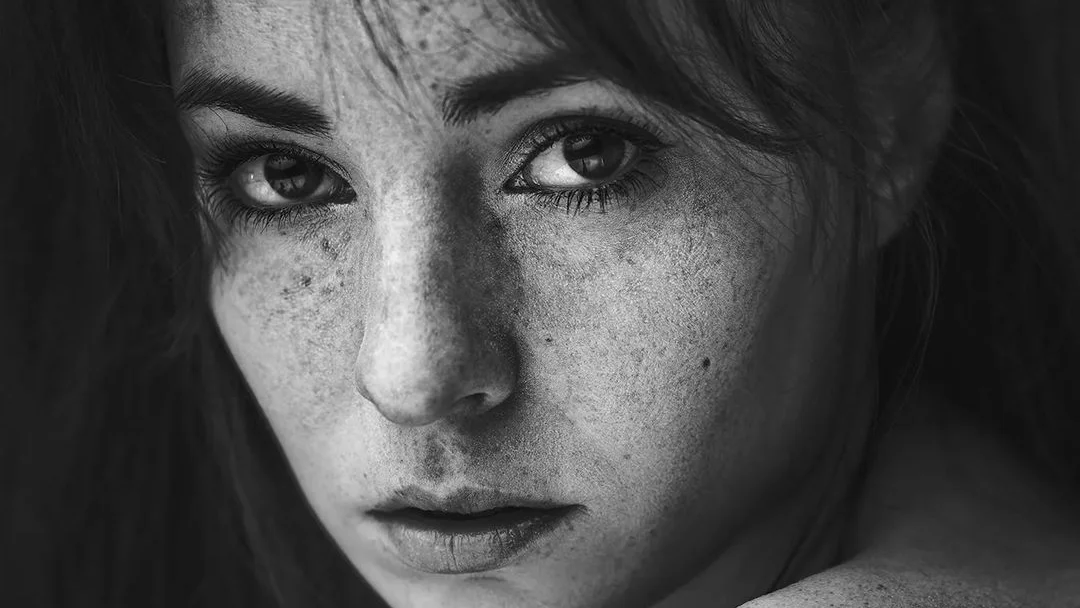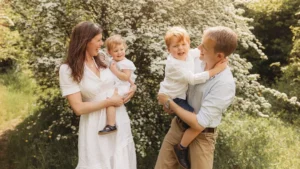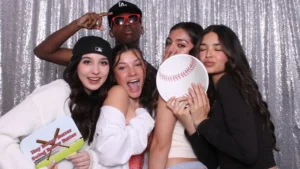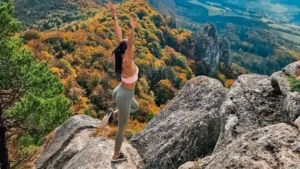Close Up portrait photography is a really interesting variant of portrait photography. You have to find a balance between having an interesting and appealing motif of your subject and getting close up to them to create this effect.
I’ve researched several niches and variants of portrait photography, and will share my insights of close up portrait photography with you now!
Fundamentals of Close-Up Portrait Photography
What makes close up portrait photography in the first place? Let’s start with the basics to master the key techniques and understand the components of this niche.
Understanding the Basics
In the realm of close up portrait photography, your focus is to capture the details of your subject.
Ensuring your subject is well-lit, either with natural light or controlled studio lighting, helps to accentuate those telling details, like the sparkle in someone’s eye or the texture of their skin.
Choosing the Right Equipment
Prime lenses, such as an 85mm or a 100mm, typically offer outstanding sharpness and a pleasing background blur (bokeh) that draws attention to the subject.
Selecting the right lenses based on focal length and maximum aperture is essential in close up portrait photography, as it affects how close you can get to your subject and impacts the overall look and feel of your images.
| Lens Focal Length | Optimal for |
|---|---|
| 50mm | Casual portraits, versatility |
| 85mm | Classic portraits, more personal feel |
| 100mm | Detail close up shots, minimal distortion |
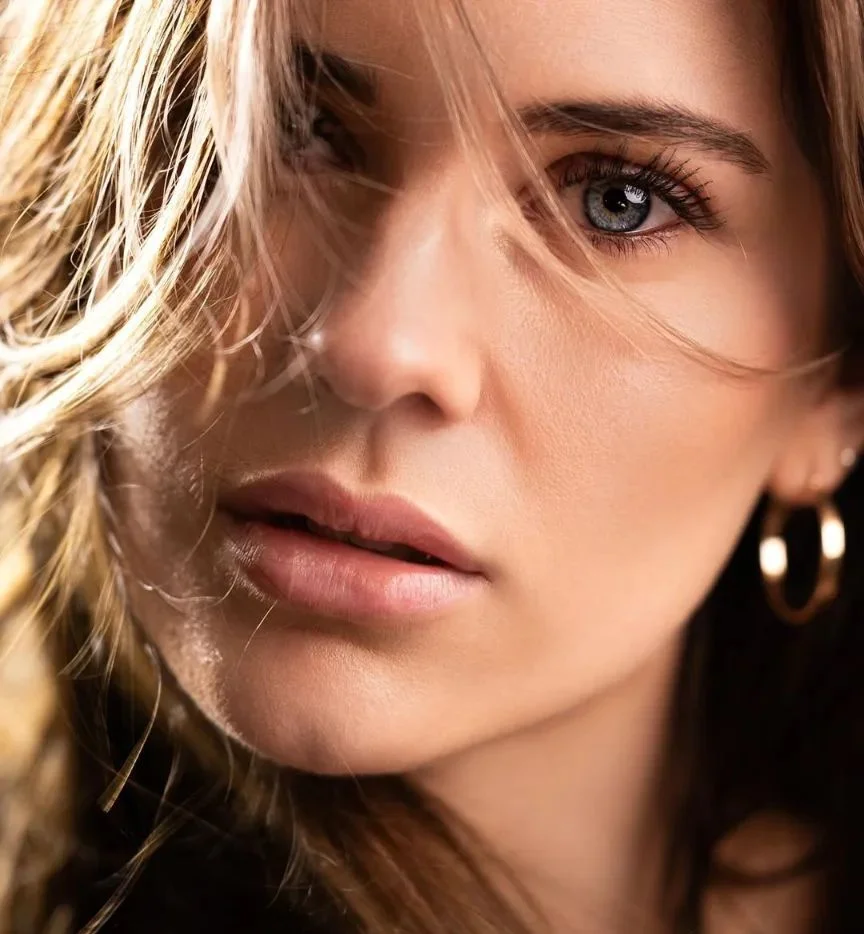
Setup Your Camera
When getting your camera ready, you’ll want to dive into manual mode to take full control in your close up portrait photography session.
- Aperture: A lower f-number gives you that desired blurry background, making your subject pop.
- Shutter speed: Fast enough to eliminate any unwanted blur, especially if you or your subject moves slightly.
- ISO: low as possible to maintain image quality without introducing noise.
Composition and Focal Techniques
As always, composition plays a major role in elevating your close up portrait photography. On top of that, you can vastly differ your results depending on the focus techniques and length you choose!
Mastering Composition
To create compelling close up portrait photography shots, your composition is very important.
Utilize the Rule of Thirds to anchor your subject’s eyes — one of the most captivating elements of your portrait — at the intersection of the grid lines.
Thinking in thirds improves the balance of your photos and leads to more nuanced, engaging results.
Additionally, consider the background; ensure it’s free from distractions to maintain a strong focus on your subject. If you need more insights on portrait composition, have a look at our Composition Guide.
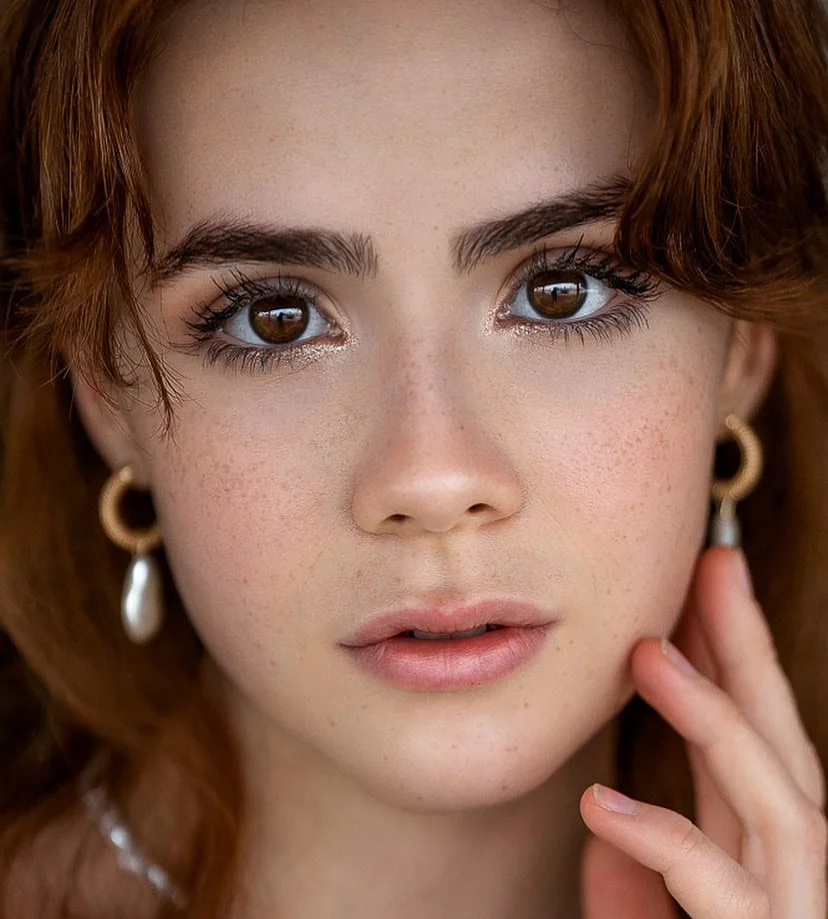
Choosing Focal Length
Selecting the appropriate focal length is also very important for close up portrait photography.
A telephoto lens — generally ranging from 70mm to 200mm — is ideal for close-up photos as it provides a flattering compression and helps to isolate the subject from the background.
This creates a shallow depth of field, directing all attention to the subject’s features while softly blurring the background.
Harnessing Natural Light
Natural light, when used skillfully, can be your most valuable asset in close up portrait photography.
It sculpts your subject with soft, diffused light that can highlight facial features without harsh shadows.
Remember, the size of the aperture influences the depth of field: a wider aperture (a lower f-number) blurs the background more while letting in more light for a clearer, sharper subject.
Controlling the light can significantly enhance the mood and quality of your close up portrait photography.

Capturing the Essence
In close-up portrait photography, you’re not just snapping a picture; you want to depict a story that includes a variety of human emotions and textures. Getting into detail is essential for this task.
Focusing on Details
We’ve already talked about a few specific points to get the details right. Here are my top 5 points to keep in mind to get the perfect detailed close up portrait photography shot!
- Lens Choice: Choose the right lens for your photo. I’d recommend a wide-aperture portrait lens
- Lighting: Soft, diffused light brings out details without harsh shadows stealing the spotlight.
- Focus on the Eyes: Keep sharp focus on the eyes for portraits that captivate at first glance.
- Framing Flair: Thoughtful composition highlights intricate details and individuality.
- Angle Mastery: Experiment with angles to reveal unique features and add visual interest to your portraits.
Conveying Emotions
Emotions are important to get a striking image that stays in the viewers mind.
To convey emotions the best, pay close attention to the eyes and mouth, as these are conduits of inner feelings. A squint, a smile, or a furrowed brow can speak volumes.
Selecting Props and Accessories
One last tip for the shooting!
I love recommending props as they can really add to a photo with additional context and layers.
Whether it’s a vintage hat suggesting a nostalgic past or a simple ring speaking to minimalist elegance, every choice you make should serve to highlight the subject’s personality and contribute to the overall storytelling of the photo.
Post-Processing and Creative Enhancement
Let’s enhance your close-up portrait photography further through post-processing! By bringing out the best in colors and details, you make sure your photos really are top-notch.

Basic Editing Techniques
For starters, getting your basic editing techniques down is crucial to get the best out of your close up portrait photography. Here’s how you can give your photos a significant uplift:
- Exposure Adjustment: Ensure your subject is neither too bright nor too shadowy.
- Color Correction: Keep the skin tones natural yet vibrant. A simple tweak to the white balance can work wonders.
- Cropping: Sometimes, less is more. Crop to enhance the subject’s features and direct the viewer’s focus.
Remember, steady and subtle changes often lead to the most professional results. Refrain from overdoing any adjustments to maintain the natural essence of your portraits.
Advanced Post-Processing Tips
Now, let’s talk about some advanced post-processing tips that will truly set your work apart:
- Selective Color Enhancement: Go beyond basic vibrancy; selectively amplify the colors of lips, eyes, or clothing to make them pop.
- Dodge and Burn: Sculpt the face and highlight key features by playing with light and shadow. This will add depth and dimension to your close-up shots.
Experiment with various creative techniques, merging your unique artistic vision with technical skills to develop a signature style. Editing is mostly practice, so go and get creative!
My Opinion on Close Up Portrait Photography
After looking at many close up portrait photography examples, I immediately found some new favorite photos. I think the eyes are one of the most striking and enticing element of portrait photography, and by doing a close up, you can really focus on it.
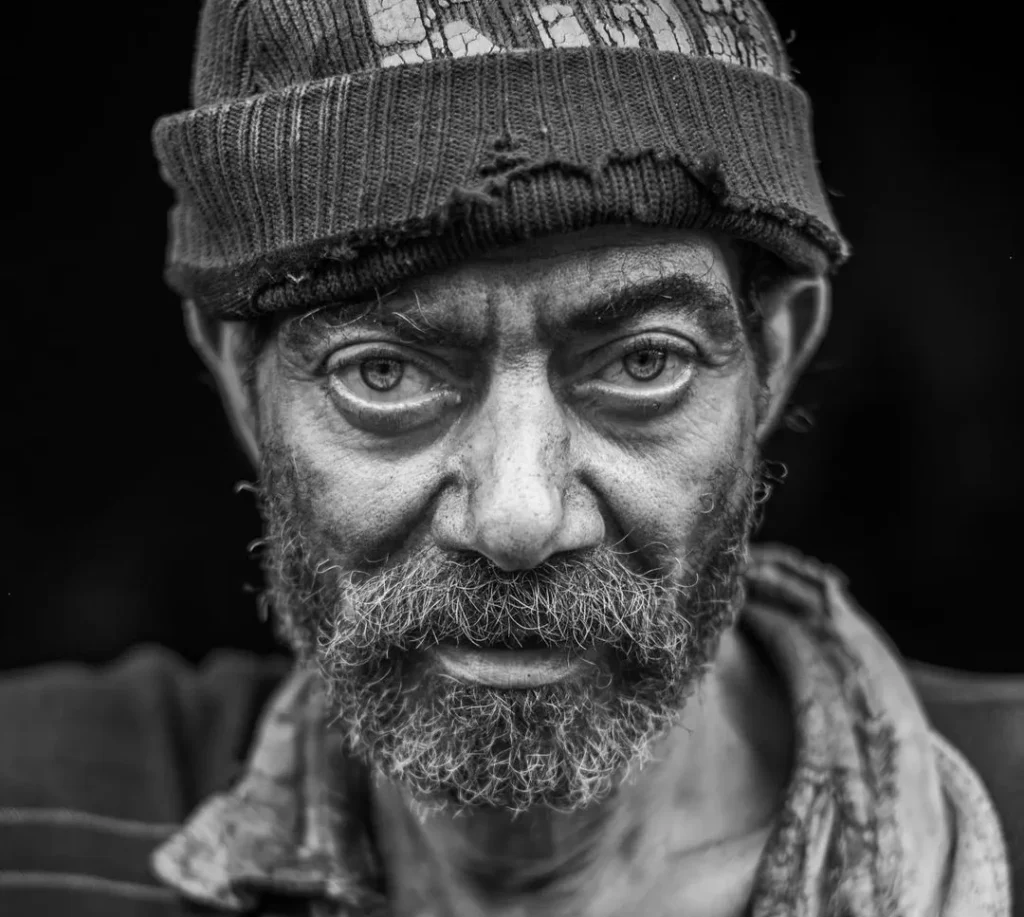
To try this niche you definitely need some more professional equipment with the right lens (and aperture!) to get satisfying results. But once you’ve tried it, you will be amazed how much emotions and grace you can get with such close up shots!
I definitely recommend close up portrait photography to every photographer who has an interest in portrait photography (even if you do not – you learn a lot about aperture!).
If you need more inspiration or want to try other portrait photography niches, have a look at these articles:
Also, have a look at our Socials to stay up-to-date with the latest photography trends!
Did you made experiences with close up portrait photography? Let us know in the comments down below!
Frequently Asked Questions
How do I get started with close-up portrait photography for beginners?
Begin your journey with the right equipment; a camera with a good lens suited for portraiture is essential. Starting with flowers can help you practice focus and composition before you move on to taking portraits of people.
What are some creative ideas for taking close-up portraits?
Explore the use of complementary colors to make your subject’s features pop. If your subject has blue eyes, consider incorporating yellow elements. Embrace different perspectives and angles to create dynamic images.
Which apps are best for enhancing close-up portrait photos?
Editing apps like Adobe Lightroom and VSCO offer many tools that help you perfect your close-up shots. Adjust lighting, apply filters, or fine-tune details to ensure your subject looks their best.
Who are some famous photographers known for their close-up portrait work?
Immerse yourself in the works of renowned photographers like Steve McCurry or Annie Leibovitz. Their ability to capture a person’s essence up close is inspiring and instructive.
What are the best poses to use in close-up portrait photography?
The best poses in close-up portraiture are ones that bring out your subject’s personality and features. Encourage natural expressions and use gentle guidance to find angles that feel both comfortable and evocative.
What camera settings should I use for the perfect close-up portrait?
Understanding the exposure triangle is crucial. Use a wide aperture to achieve a blurred background. Set your ISO as low as possible while still ensuring adequate exposure. Aim for a shutter speed fast enough to prevent motion blur, especially if you or your subject moves.

